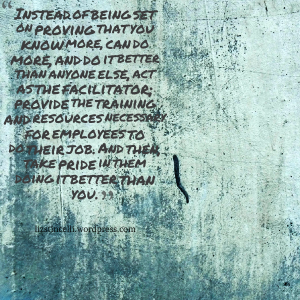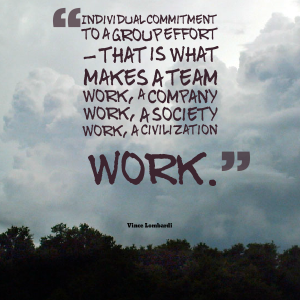 “Employees are a company’s greatest asset – they’re your competitive advantage. You want to attract and retain the best; provide them with encouragement, stimulus, and make them feel that they are an integral part of the company’s mission.” — Anne M. Mulcahy
“Employees are a company’s greatest asset – they’re your competitive advantage. You want to attract and retain the best; provide them with encouragement, stimulus, and make them feel that they are an integral part of the company’s mission.” — Anne M. Mulcahy
By Elizabeth Stincelli, DM
What Makes them Great?
There are ‘A’ employees, ‘B’ employees, and even ‘C’ employees. Which ones do you want working for you? ‘C’ employees are a detriment to your organization. They collect a wage and benefits while providing less than average productivity and quality. ‘B’ employees perform at the bare minimum to meet productivity and quality standards. But, then there are the ‘A’ employees; these are those with a great attitude, ambition, and integrity. They are willing to go above and beyond; they thrive on collaboration and contribution. These are the attributes that make them great employees.
Attitude
When employees have a good attitude, they are engaged in their work, more likely to be motivated, remain committed to their leader, and to stay focused on achieving the goals of the organization. These are usually the employees who know they are valued. They understand that, on a grander scale, they are contributing to something meaningful, something bigger than themselves. They trust and respect their leaders and feel that they are trusted and respected in return.
Ambition
Employees with ambition know they are talented and have something of value to contribute. They love to be engaged and are always up for a challenge. These employees believe that there are great opportunities for those who work hard, develop themselves both professionally and personally, and who are dedicated to the goals of the organization. They know that their hard work is appreciated and will be rewarded. They trust their leaders not to take advantage of their ambition and motivation. They come to work to make a difference.
Integrity
Employees with integrity are loyal; they behave in the best interest of the organization. They hold themselves accountable for the responsibilities placed on them. They are dependable and trust worthy. These employees pride themselves on setting a good example for others to follow and they are consistent in their words and actions.
Collaboration and contribution
Great employees stay at their jobs because they are passionate about collaborating with others to co-create new ideas and make valuable contributions. They get satisfaction from cooperating across groups and departments. They are good communicators. They take pride in sharing their knowledge, skills, and experience with others. They see the success of one as the success of all.
Hire the Asset; Inspire the Greatness
As Anne M. Mulcahy said in the quote from the opening of this article, “Employees are a company’s greatest asset.” It is not only the responsibility of leadership to hire the asset, but to inspire greatness in them. Great employees need to find meaning in their work. They want growth opportunities and you are the one who can offer them these opportunities. One of your most important tasks as a leader is to make sure your team is working well together and that everyone feels engaged and valued. When employees are engaged and feel valued, it has a positive impact on their attitude, ambition, integrity, and collaboration and contribution. The next thing you know, you have great employees.
© 2015 Elizabeth Stincelli
Liz Stincelli is passionate about recognizing and inspiring the leader in each of us. She is the CEO of Stincelli Advisors where she focuses on helping organizations engage employees and improve organizational culture. Liz holds a Doctor of Management degree with an emphasis on organizational leadership.
Learn more about Liz by visiting her website, stincelliadvisors.com and connect with her on Twitter @infinitestin, Google+, and LinkedIn. You can contact her by email at stincelliadvisors@gmail.com.









